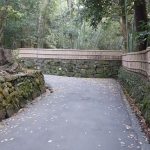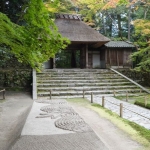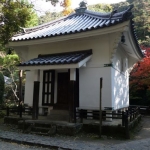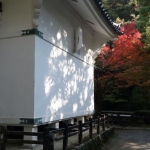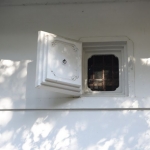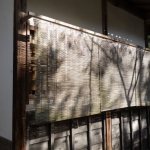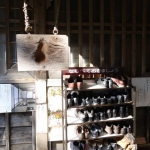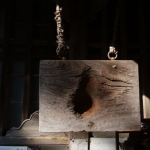Honen-in
The plants and flowers
I raised about my hut
I now surrender
To the will
Of the wind
–Ryokan
A great deal of the charm of Honen-in comes from its location near the Philosopher’s Path in the woods at the foot of Nyoi-ga-take Mountain, providing a very special quiet retreat from the city.
Honen-in is named after Honen (133-1212), who founded the Jodo sect of Buddhism in the beginning of the 13th century and erected a statue of Amidha on the present site. The main halls and gardens date from the middle of the 17th century when Jodo came under the patronage of the Tokugawas. Some rooms from Toyotomi Hideyoshi’s Fushimi Momoyama Castle were transferred here in the 17th century.
Long persecuted by older more established denominations, the faithful persevered and now Jodo Buddhism is the second largest sect in Japan, surpassed only by the Shin sect which is considered an offshoot of Jodo. Honen and two disciples Anraku and Juren erected an image of Amida at this site and for many years, the worship site consisted only of a roofed open-air Amida image and services were performed befor this image three times a day as well as night.
Soon after Honen’s death, the roof over the Amida was destroyed. Only after the Tokugawa Shoguns came to power and the monks of Enryku-ji temples and their monks had been eliminated was the present main hall (Hondo) built in 1680.
It has been the tradition of the temple for the monks to place 25 flowers on the floor before the Amida image every morning. These flowers symbolize the 25 Bodhisattvas who accompany Amida when he descends from his Western Paradise to receive the souls of the newly deceased.
The two long rectangular sand mounds one walks between are raked by the monks, using designs symbolizing the season (on the left) or offering abstract symbols of a religious nature, such a water…a symbolizing impermanence (on the right).
Their website http://www.honen-in.jp/


